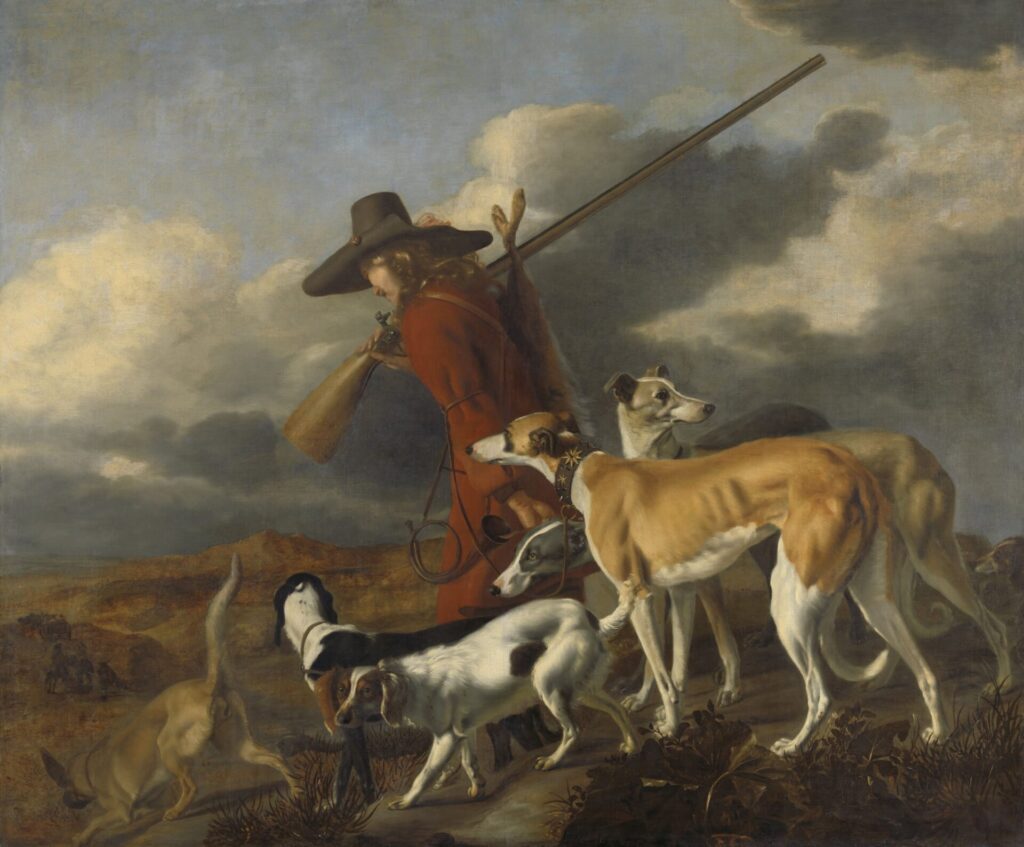Village squire Henry Hastings was one of old Dorset’s greatest country sportsmen – but wild animals were not his only quarry, says Roger Guttridge
In one respect at least, country sportsman Henry Hastings was a generous man – but it was not in the hunting, shooting and fishing kind of sport that his ‘generosity’ truly excelled.
Judging by the comments of his neighbour, Anthony Ashley-Cooper, first Earl of Shaftesbury, the squire of Woodlands, near Wimborne, merrily shared his DNA far and wide. And it’s pretty certain that many Dorset people carry Henry’s genes to this day – though few of us would know it.
According to Lord Shaftesbury, Dorset’s own ‘Hooray Henry’ spent almost all his time hunting, shooting, hawking and fishing … except for the time during which he ‘borrowed his neighbours’ wives and daughters’.
He had a particular penchant for younger women, apparently preferring those of the ‘lower classes’ who were below the age of 40.
In Shaftesbury’s words, there was no young woman of the status of a yeoman farmer’s wife or lower ‘but it was her own fault if he was not intimately acquainted with her’.
One of Henry’s favourite tactics was to butter up the women’s fathers, husbands and brothers, inviting them to his house and serving them ‘beef, pudding and small beer in great plenty’. Given his standing in the community, it was hard for the menfolk to do anything except turn a blind eye.
Buck, badger, otter, hare
Henry – born in 1551 – was the second son of George Hastings, fourth Earl of Huntingdon. He became lord of the manor of Woodlands through his marriage to Dorothy Willoughby, the second daughter and co-heiress of one Sir Francis Willoughby, who was the builder of Wollaton Hall, Nottinghamshire.
Lord Shaftesbury, the squire of nearby Wimborne St Giles, described him as ‘low, very strong and very active, of a reddish flaxen hair’.
He continued: ‘His clothes were always green cloth and never worth, when new, £5.
‘His house was perfectly of the old fashion, in the midst of a large park well-stocked with deer; and near the house rabbits for his kitchen; many fishponds; great store of wood and timber.’
The scope of Henry’s sporting activities was as limitless as his philandering.
‘He kept all manner of sport hounds that ran buck, fox, hare, otter and badger, and hawks long- and short-winged.
‘He had all sorts of nets for fish. He had a walk in the New Forest and the manor of Christchurch supplied him with red deer, sea and river fish.’
Wanted: housekeeper
Champion seducer and great country sportsman Henry certainly was – but his housekeeping standards left something to be desired.
‘The great hall was strewed with marrow-bones, full of hawks’ perches, hounds, spaniels and terriers,’ said Shaftesbury. ‘The upper side of the hall hung with fox-skins of this and the last year’s killings; a pole-cat intermixed; guns and keepers’ and hunters’ poles in great abundance.’
More dogs could be found in the parlour, where most of the great chairs were usually occupied by litters of cats, who were not to be disturbed. Some of the cats attended their master at dinner and he kept a ‘little white stick that he might defend such meat that he had no mind to part with to them’.
The windows in the large parlour were littered with Hastings’ bows, arrows and other equipment, while the corners of the room were ‘full of the best-chosen hunting or hawking poles’.

A century of good times
At one end of the parlour was Henry’s oyster table; well used, as he ate Poole oysters twice a day. At the other end was a desk, on which sat the Bible and the Book of Martyrs, and two tables. On the tables were hawks’ hoods, bells and other paraphernalia and two or three old hats with the crowns pushed in to hold 10 or 12 pheasant eggs.
Nearby was a drinks closet stocked with wine and beer – although the booze was strictly rationed, as Hastings never permitted excessive drinking by himself or his guests.
Lord Shaftesbury added: ‘He was well-natured, but soon angry, calling his servants bastards and cuckoldy knaves, in one of which he often spoke truth, and sometimes in both.
‘He lived to be 100 and never lost his eyesight but always wrote and read without spectacles and got on horseback without help. Until past four score, he rode to the death of a stag as well as any.’
According to the Dictionary of National Biography, Henry just failed to make 100, dying aged 99 in 1650.
His long-suffering first wife died in 1638, 12 years before her husband. Six months later, Hastings settled part of his estate on Anne Langton, of Woodlands, the unmarried daughter of William Langton. They subsequently married – but when Henry died, he was buried alongside Dorothy at the old Horton church.
Their son, Sir George Hastings, joined them there after his death in 1657. There is no mention of Anne in the epitaph.




